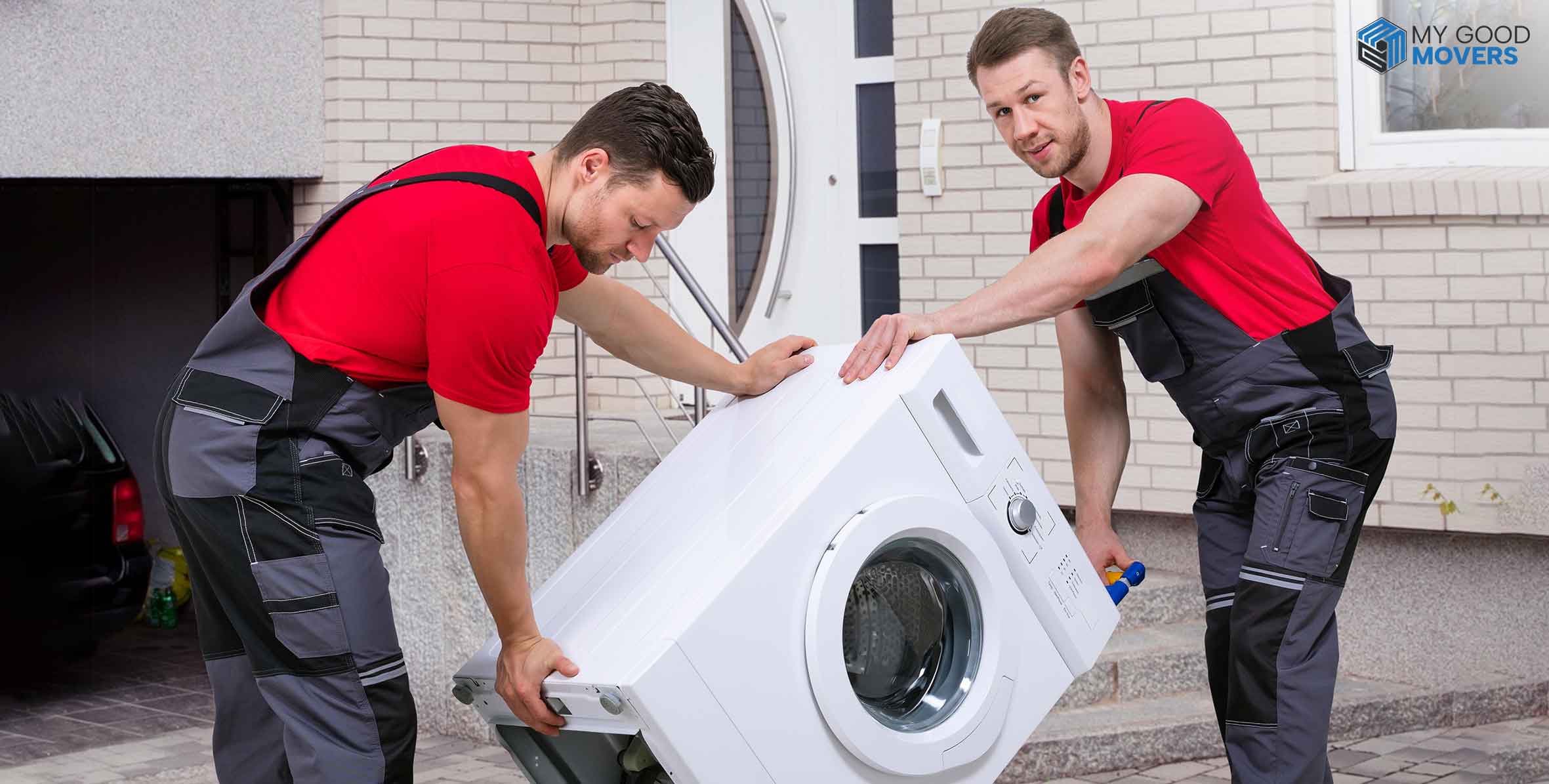When it comes to moving heavy appliances, a washing machine might seem like just another bulky item to haul. But don't be fooled—without the proper preparation and techniques, you could be setting yourself up for costly repairs or even injury.
After all, a washing machine isn’t just heavy; it’s packed with delicate parts that need special attention during a move. So, how can you ensure everything goes smoothly? With the right steps, you can protect your appliance, your floors, and your back.
Let’s examine the smart way to move your washing machine, saving yourself the headache and making your move as easy as possible.

The earliest washing machine, patented in 1797, was a simple hand-powered device known as a "scrub board."
How to Disconnect a Washing Machine for Moving
Before moving a washing machine, it's important to disconnect it properly. Doing this correctly will help avoid any water leaks or damage during the move.
The steps to move a washing machine properly:
- Unplug the machine: First, turn the washing machine off and unplug it from the wall.
- Shut off the water supply: Look for the water valves (usually behind the machine) and turn them off. This will stop any water from flowing into the washing machine.
- Detach the water hoses: Use pliers to carefully unscrew the hoses from the back of the machine. Have a bucket or towel ready to catch any water that spills out.
- Drain the washing machine: Tip the machine slightly forward to remove any leftover water. You can use a small container or towel to clean up.
- Secure the drum: Many washing machines come with special bolts or brackets that secure the drum. Make sure to use these so the drum doesn't move around while the machine is being transported.
Chances are, if you are looking for ways to move a washing machine, you might also need help to move a refrigerator.
Best Way to Move a Heavy Washing Machine Without Damaging It
When it comes to moving a heavy washing machine, using the right tools and techniques can help prevent injury and damage to the machine. Below is a simple comparison of the best ways to move a washing machine.
| Method | What You Need | Why It Works |
|---|---|---|
| Using a dolly or hand truck | Appliance dolly, straps | Reduces the weight you have to carry |
| Moving straps | Moving straps, gloves | Spreads the weight, making it easier to lift |
| Sliding it on a blanket | Thick moving blanket | Prevents scratches and helps slide smoothly |
When using a dolly or strap, make sure the washing machine stays upright. Tilting it too much could damage the drum or internal parts. If you're moving it on a blanket, ensure someone is helping you control the movement.

Older washing machines used around 40-50 gallons of water per load. Today’s energy-efficient models can use as little as 15-20 gallons, making them much more eco-friendly.
How to Move a Washing Machine Upstairs Safely
Moving a washing machine up the stairs is definitely tricky, especially because of its weight and size. Here’s a real-life example to explain how it can be done:
Curious about your moving costs? Fill out the details, and we’ll calculate them for you.

Example: Let’s say Mike had to move his washing machine to his new home on the second floor. To make things easier, he used a dolly designed for appliances. With the help of his brother, they tilted the machine slightly and strapped it securely to the dolly. Together, they slowly worked their way up the stairs, taking one step at a time, making sure the washing machine stayed balanced.
Key Steps:
- Always have someone helping you. Moving a washing machine alone is risky.
- Use a sturdy dolly and secure the washing machine with straps.
- Take your time going up each step to keep the washing machine steady.

Modern washing machines can spin at speeds up to 1,600 RPM (revolutions per minute), helping to remove water from clothes quickly and reduce drying time.
Related: How to Move a Mattress
How to Protect a Washing Machine During the Move
Making sure your washing machine is protected during the move is very important. You don’t want to end up with dents or scratches. Follow these simple steps:
- Wrap the washing machine in blankets: Use thick moving blankets to cover the entire washing machine. This will protect it from bumps or scratches.
- Secure the drum: Always lock the drum in place using the stabilizer bolts or brackets. This prevents the drum from moving during transportation.
- Use moving straps: Once the washing machine is wrapped and secure, tie it down in the moving truck using moving straps. Make sure it's placed upright and against a wall for extra support.
If you don’t secure the washing machine properly, it could tip over or get damaged during the drive. Take the time to pack and protect it well.

Monday was traditionally considered "wash day" because, before the invention of washing machines, it took a whole day to complete the laundry by hand.
Tips for Moving a Washing Machine Without Professional Help
Moving a washing machine yourself can be done if you’re careful and well-prepared. Here are some easy tips to follow:
- Measure your space: Before moving, measure your doorways and staircases to ensure the washing machine will fit through.
- Use the right tools: To make the process easier, equip yourself with a dolly, moving straps, and padded blankets.
- Take it slow: Don’t rush the move. Go step by step to avoid damaging the washing machine or hurting yourself.

Bendix introduced the first fully automatic washing machine in 1937, making it easier for households to clean clothes without manual intervention.
Common Mistakes to Avoid:
- Forgetting to secure the drum: It could get damaged while moving if the drum isn't locked.
- Not draining the water fully: Water left inside the machine can leak and damage your floors or furniture.
- Attempting to move it alone: Washing machines are heavy! Make sure you have someone to help you.
Hiring a professional mover might be the best option if you're unsure about doing it yourself or the washing machine is too heavy.
Also Read: Budget-Friendly Packing Materials for Your Move - Save Money & Pack Smart





